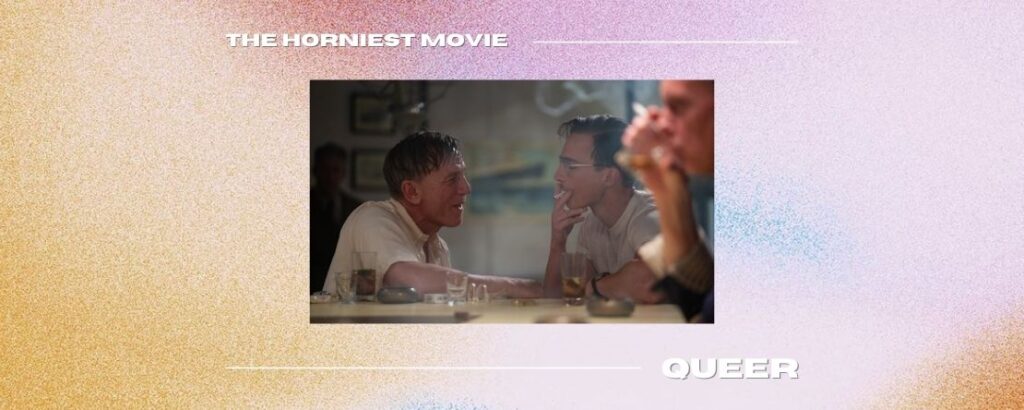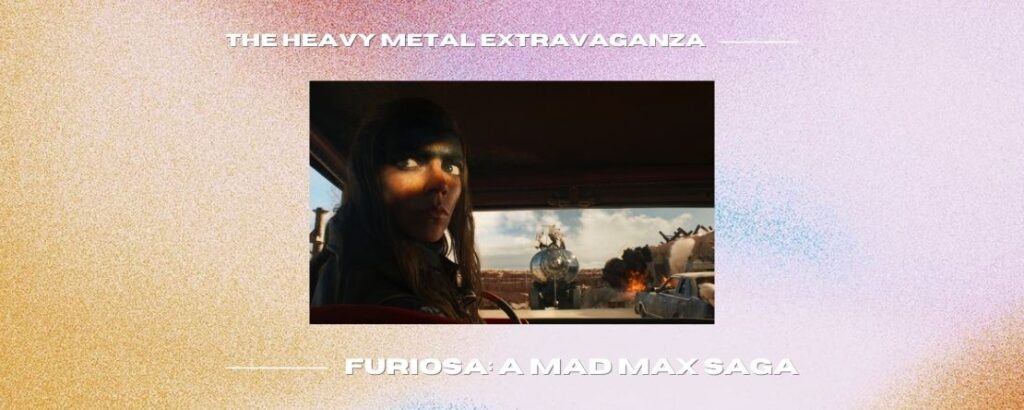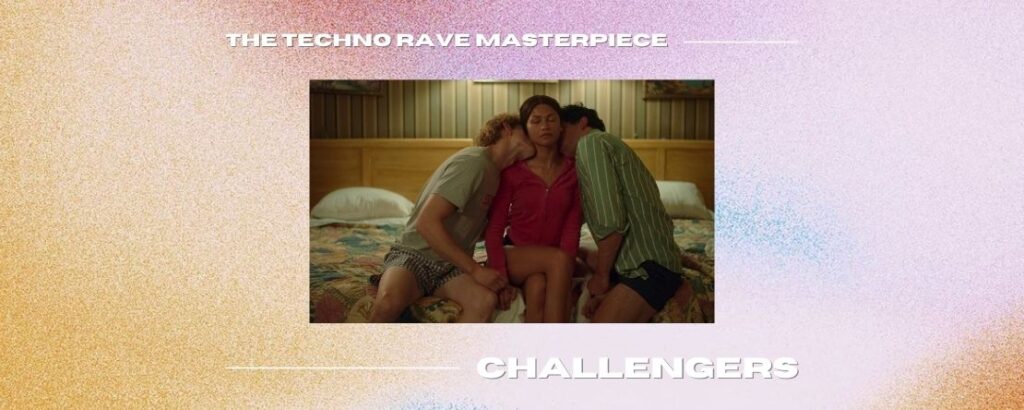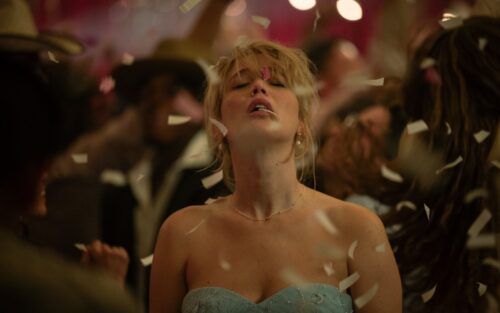
RANGE Magazine’s Best Films of 2024
From electrifying horrors to genre-defying epics, these films not only entertained but challenged the way we see the world.
by Prabhjot Bains
- Published on
In a chaotic year that yielded BRAT summer, an all-encompassing rap beef, and a record number of national elections, the cinema provided not only a much-needed respite but also a sombre, seething reflection of our terminally online and increasingly confused world. It’s only fitting that the year that felt like one strange movie heralded a steady stream of exciting and challenging experiences.
While reliable franchise fare like Deadpool & Wolverine, Inside Out 2, and A Quiet Place: Day One injected a much-needed jolt into the box office, the appetite for originality reigned supreme. From horror hits like Longlegs to the A24-record-breaking Civil War to the endlessly memeable Challengers, original releases made a far greater impression than big-budget misfires like Joker: Folie à Deux (A sequel which also stands as one of the strangest flops in Hollywood history)—signifying an enduring desire for inventive and eclectic programming.
Though most of these films failed to crack RANGE’s list of the greatest films of 2024, they’re still promising indications of a film culture that’s not only healthy but incredibly rich. From festival favourites to genre exercises to films postponed by 2023’s Hollywood strikes, here is the best of the best the movie year 2024 had on offer:

Shot in 70mm with the largely obsolete VistaVision format and running a mammoth 216 minutes—including a built-in intermission—Bradey Corbet’s The Brutalist feels like a classic lost in time, firmly grounded in the past but thematically attuned to the present. Its tale about a Jewish-Hungarian architect immigrating to the United States is so individual in design and approach that it boldly juts out into the cinematic landscape, awing and inspiring us from every angle. From the film stock it’s captured on to the rich details of each frame, The Brutalist is an experience whose very construction informs its stark meditation on American mythmaking. Quite simply, it’s perfection that breathes.

Luca Guadagnino’s adaptation of William S. Burroughs’ semi-autobiographical novel, Queer, features some of the most graphic gay sex scenes committed to mainstream cinema. But they also brim with warmth, beauty, and honesty, plunging us into the sombre and dreamy headspace of its junkie protagonist, played by Daniel Craig as he’s never been seen. From the surreal editing to the anachronistic needle drops (Nirvana’s “Come as You Are” plays over a 1940s-set Mexico City), Queer finds Guadagnino at his most playful and erratic. He conjures an experience that feels as overwhelming, rich, and kaleidoscopic as the romance it follows, rife with frames that practically swoon along with the characters. Armed with a sumptuous score by Trent Reznor and Atticus Ross, Queer makes a strong case that love, not dope, is the most difficult addiction to curb.

With The Substance, director Coralie Fargeat conjures a grotesque marvel and a body horror extravaganza that violently picks apart Hollywood’s ceaseless obsession with patriarchal beauty standards. Unfolding at a breakneck pace across 140 mind-melting minutes, with some of the most guttural and ingeniously revolting practical effects, The Substance manifests as an unbelievably cathartic experience. Bursting with kaleidoscopic detail and overflowing with gnarly, cringe-inducing “WTF” moments, The Substance is not a cult classic in the making but one already made. In what is the most aggressive and hypnotic piece of filmmaking of the year, Fargeat boldly finds the “taste” in “tasteless.”

George Miller’s Mad Max universe is not only a vision of a glorious apocalyptic future, but also a trip to cinema’s past—a roaring evocation of the death-defying stunts of icons like Buster Keaton and Harold Lloyd. The fiery, diesel-laced exploits of Max Rockatansky and Imperator Furiosa are modern-day analogues to the adventures of those cinematic pioneers. In heavily relying on sound and vision to craft his epic, Miller imbues Furiosa: A Mad Max Saga with a visceral, exhilarating power. His prequel is his most pure and primal expression of cinema, distilling it down to its very essence and injecting it into our veins at high-octane speeds. The result is a euphoric blend of guns, guts, and gasoline that doubles as one of the most metal movies ever made.

Sean Baker’s Anora is a screwball comedy by way of the great Robert Altman—a rich and lived-in experience that never fails to teem with painfully authentic emotions and outcomes despite how outrageous it becomes. It continues Baker’s class-conscious exploration of the lives of sex workers with great hilarity and calamity, unfolding as a vibrant inversion of the Pretty Woman fantasy. At the heart of it lies Mikey Madison’s virtuosic turn, whose innate physicality, vulnerability, and charisma result in one of the greatest performances and characters of the 21st century. It’s the type of instant classic that dreams are made of.

Armed with a sweltering love triangle for the ages, Luca Guadagnino’s erotic tennis thriller, Challengers, repeatedly places the audience on a knife’s edge of sexual tension and cutthroat gamesmanship, forcing us to teeter on the half-court net until it explodes with pure, intoxicating catharsis. In effect we come to embody the ball, thwacked not only around the court but into each moment of betrayal and passion with pure, unadulterated energy. To the beat of Trent Reznor and Atticus Ross’ thumping, relentless, and now-iconic techno score, Challengers pokes and prods at the right emotions, at exactly the right times, to completely seduce us into its wonderfully overwrought tale. As the only filmmaker with two films on this list, Guadagnino illustrates that no one captures sex, sweat, and summer quite like him.

It can be argued, to varying levels of persuasiveness, that we live in the most peaceful time on Earth. So, why does immense sadness still pervade? Sure, many of us haven’t experienced the epic, generational forms of suffering that come with war, genocide, or displacement, but does that mean we’re any less entitled to our feelings? Like its namesake, Jesse Eisenberg’s A Real Pain masterfully and delicately reconciles that classic sense of pain with our modern malaise, beautifully rambling its way through heartfelt observations on the legacy and validity of pain. Replete with purposeful direction and an Oscar-caliber performance from Kieran Culkin, A Real Pain resonates at a level far grander productions can only dream of.

Matthew Rankin’s Universal Language reimagines Canada as a nation that feels recognizable but alien, where the two official languages are Persian and French. It intertwines multiple storylines and arcs, creating a delightfully odd mosaic of the country’s history (fictional and real) and the “Two Solitudes” that continue to pervade. Rankin’s observant eye immerses us in a snowy Winnipeg, defined by its grey concrete, weird Persian store signage (Kleenex Emporium, Turkey Shop, and National Typewriter), and a Tim Hortons that serves double-doubles as Persian chai. Full of little oddities, Universal Language is a masterful example of swift, detailed worldbuilding that taps into biting truths about Canada’s ever-changing notion of cultural identity.

While Adam Elliott’s masterfully animated Memoir of a Snail proves too mature of a watch for most children—exploring topics like alcoholism, toxic fetishism, and religious fanaticism to name a few— it doesn’t mean it has no life lessons to impart on its adult audience. Across each meticulously handcrafted frame, Elliott’s film unearths a humble and powerful meditation on grief, trauma, and the cages we create for ourselves when grappling with them. Both incredibly funny and tragic, its story about two twins forced to live on opposite ends of Australia repeatedly makes us stop dead in our tracks, smell the air, and embrace the bittersweet fact that “life can only be understood backwards, but we have to live it forwards.”
Read our interview with Adam Elliott here

We all have that one song, TV show, or movie that stays with us. A piece of media so comforting and formative that it not only offers us an escape, but ultimately shapes who we become. Writer-director Jane Schoenbrun’s sophomore outing, I Saw the TV Glow, powerfully examines that experience, taking us on a surreal, liminal trip that uses every crevice of the frame to both unmoor and hypnotize audiences. It’s an experience that’s as stylistically bold as it is emotionally introspective, mining profound truths about how we consume media, how our relationships with it change over time, and how much of who we are is intrinsically tied to it. Its all-encompassing soundtrack, full of indie earworms from Yeule, Caroline Polachek, and Phoebe Bridgers to name a few, only empowers its vivid, impressionistic tapestry.
By Prabhjot Bains
Glen Powell fights his way through a blunt but lovingly pulpy satire.
By Prabhjot Bains
Jennifer Lawrence goes ballistic and animalistic in Lynne Ramsay’s fever-dream character study.
















